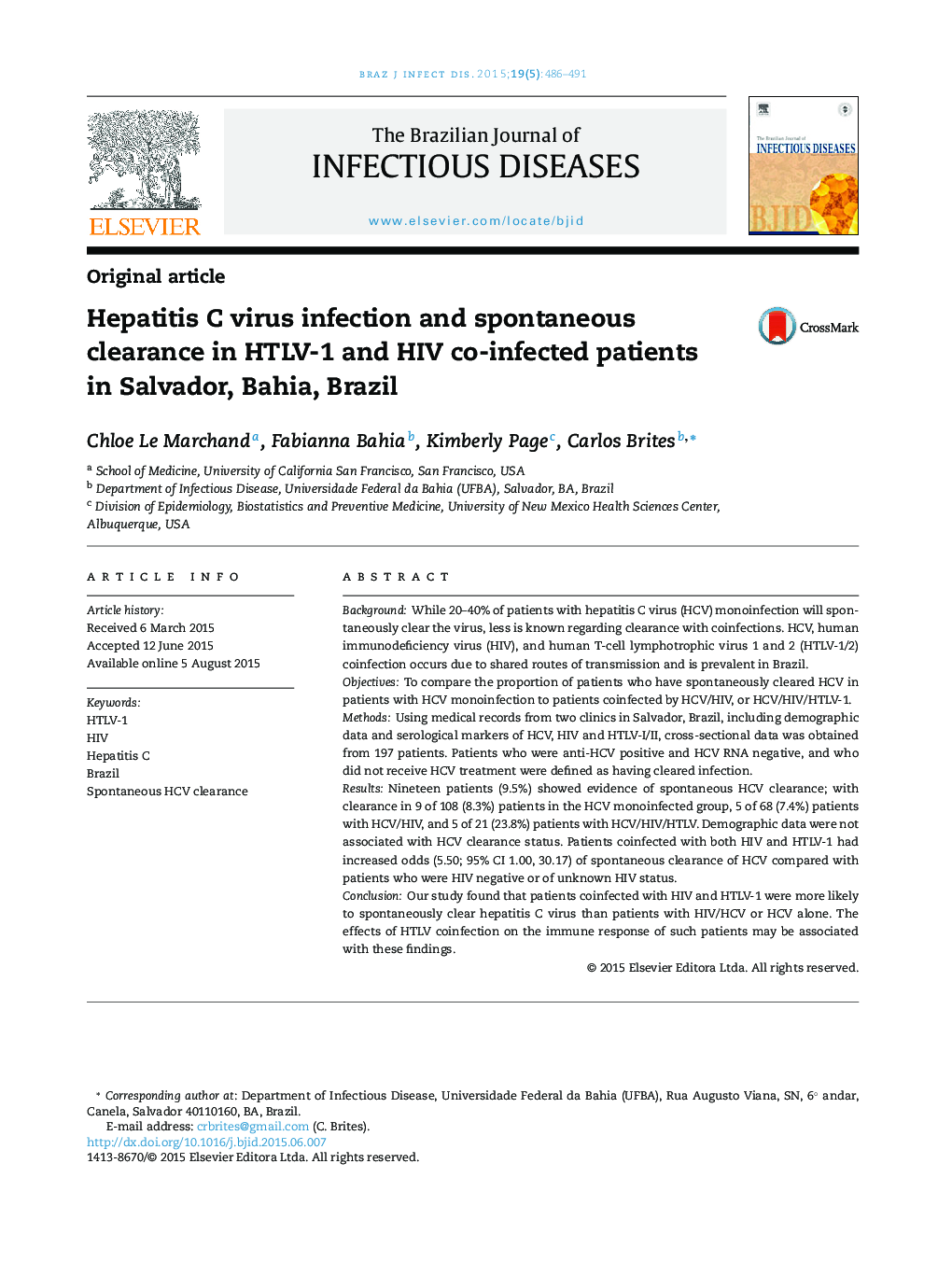| Article ID | Journal | Published Year | Pages | File Type |
|---|---|---|---|---|
| 3343803 | The Brazilian Journal of Infectious Diseases | 2015 | 6 Pages |
BackgroundWhile 20–40% of patients with hepatitis C virus (HCV) monoinfection will spontaneously clear the virus, less is known regarding clearance with coinfections. HCV, human immunodeficiency virus (HIV), and human T-cell lymphotrophic virus 1 and 2 (HTLV-1/2) coinfection occurs due to shared routes of transmission and is prevalent in Brazil.ObjectivesTo compare the proportion of patients who have spontaneously cleared HCV in patients with HCV monoinfection to patients coinfected by HCV/HIV, or HCV/HIV/HTLV-1.MethodsUsing medical records from two clinics in Salvador, Brazil, including demographic data and serological markers of HCV, HIV and HTLV-I/II, cross-sectional data was obtained from 197 patients. Patients who were anti-HCV positive and HCV RNA negative, and who did not receive HCV treatment were defined as having cleared infection.ResultsNineteen patients (9.5%) showed evidence of spontaneous HCV clearance; with clearance in 9 of 108 (8.3%) patients in the HCV monoinfected group, 5 of 68 (7.4%) patients with HCV/HIV, and 5 of 21 (23.8%) patients with HCV/HIV/HTLV. Demographic data were not associated with HCV clearance status. Patients coinfected with both HIV and HTLV-1 had increased odds (5.50; 95% CI 1.00, 30.17) of spontaneous clearance of HCV compared with patients who were HIV negative or of unknown HIV status.ConclusionOur study found that patients coinfected with HIV and HTLV-1 were more likely to spontaneously clear hepatitis C virus than patients with HIV/HCV or HCV alone. The effects of HTLV coinfection on the immune response of such patients may be associated with these findings.
